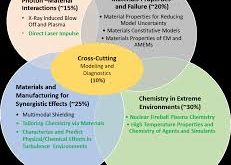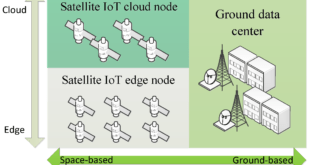In the vastness of space, communication is the lifeline that enables us to explore, discover, and connect with the far reaches of our universe. NASA, always at the forefront of cutting-edge technology, is pioneering a new era in space communication with Deep Space Optical Communications (DSOC). This groundbreaking technology promises …
Read More »Revolutionizing Earth Observation: The Power of Multi-Sensor Satellite Technology
Introduction In the ever-evolving realm of space technology, satellites have become our silent sentinels, providing us with invaluable insights about our planet. With each passing day, these marvels of engineering are equipped with increasingly advanced sensor systems that enable us to monitor, analyze, and understand Earth’s dynamic processes. Multi-sensor satellite …
Read More »Safeguarding National Security: U.S. DOD Develops Advanced Materials for Extreme Environments
Introduction: In a world where military technologies are constantly evolving, the United States Department of Defense (DOD) is at the forefront of innovation, pushing the boundaries of materials science to enhance national security. The development of advanced materials capable of withstanding extreme environments is a strategic imperative for the U.S. military. …
Read More »Harnessing the Power of Microbes: Bacteria Generate Electricity from Wastewater
In the quest for sustainable energy sources, scientists have turned to some of the tiniest and often underestimated heroes of the natural world: bacteria. These microscopic powerhouses are demonstrating their ability to generate electricity from an unlikely source – wastewater. In this blog, we’ll explore the remarkable phenomenon of bacteria …
Read More »Fortifying the Future: The Crucial Role of Concrete in Military Infrastructure
Introduction: Concrete and reinforced concrete, stalwarts of construction since the mid-19th century, continue to undergo significant advancements. As the world grapples with the depletion of natural resources and an increasing emphasis on sustainable development, the need to enhance the properties and lifespan of concrete structures becomes paramount. Concrete structures have …
Read More »The Future of Flight: Morphing Hypersonic Engines
Introduction In the quest for faster and more efficient ways to travel through the skies, hypersonic flight has emerged as a technological frontier. Hypersonic flight, defined as speeds exceeding Mach 5 (around 3,836 mph or 6,200 km/h), holds the promise of revolutionizing air travel, drastically reducing journey times, and opening …
Read More »Navigating the Silver Revolution: Global Initiatives for Managing the Threat of Aging Societies
In an era where populations are aging at an unprecedented rate, the world is facing a unique set of challenges that demand innovative solutions. The threat of aging societies is not just a local concern but a global one, prompting concerted efforts to address the multifaceted implications of an older …
Read More »Building a Home on the Moon: Exploring the Potential for a Permanent Lunar Settlement
The Moon has long been a source of fascination for humans. It is our closest celestial neighbor, and it has been the subject of exploration and study for centuries. For centuries, humans have looked up at the moon and wondered what it would be like to explore and even inhabit its …
Read More »The Future of Data Processing: How Satellite-Based Cloud Computing is Revolutionizing Edge Computing
Introduction: The New Frontier of Data Processing In our increasingly data-driven world, traditional computing infrastructure is being pushed to its limits. As organizations across sectors demand faster processing and real-time analytics—especially for remote and data-intensive applications—a revolutionary solution is emerging from an unexpected direction: space. Satellite-based cloud computing represents a …
Read More »Unleashing the Potential of 5G mmWave Technology: Challenges, Opportunities, and Innovations
Introduction: The advent of 5G technology marks a significant milestone in global telecommunications, particularly with the ongoing development of 5th generation mobile networking or 5G mmWave systems. This evolution has been characterized by a shift from initial mid-band spectrum deployments to the exploration of millimeter-wave (mmWave) ranges, spanning from 24 …
Read More » International Defense Security & Technology Your trusted Source for News, Research and Analysis
International Defense Security & Technology Your trusted Source for News, Research and Analysis




